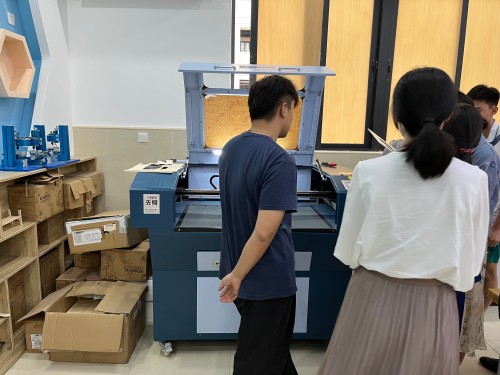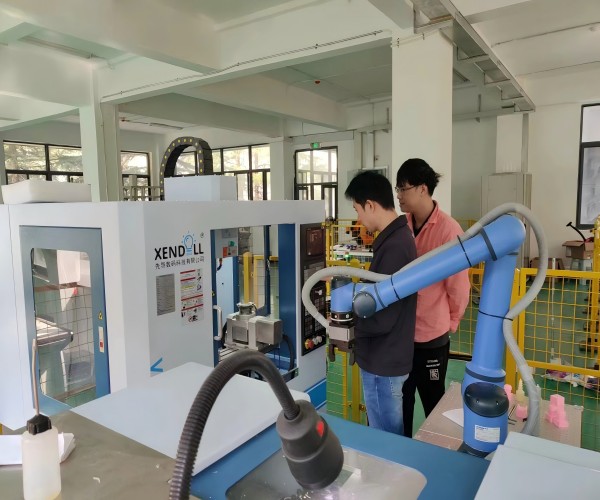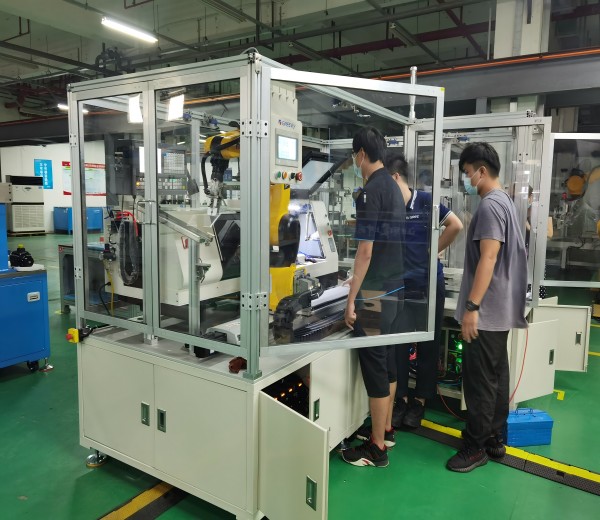Blog
Xendoll has 22 years of experience in the production of small machine tools. We will help you choose the suitable machine and share our experience in CNC machining with you.
 Nov 14, 2024
Nov 14, 2024
 Xendoll
Xendoll
 967
967
With the rapid development of manufacturing technology, CNC (Computer Numerical Control) has become increasingly popular in various industries. The 5-axis CNC milling machine, known for its high precision and efficiency, is often used in the production of complex and high-precision parts. Desktop 5-axis CNC milling machines are smaller versions of these machines, making them ideal for small-scale production or use in educational and research fields. This article will discuss the programming and operation of desktop 5-axis CNC milling machines from an educational perspective, aiming to help students understand and master these skills.

Compared to traditional 3-axis milling machines, desktop 5-axis CNC milling machines offer greater flexibility and precision. They control the movement of a workpiece in three linear axes and two rotational axes, enabling the machine to process parts at multiple angles and complete complex 3D surface machining. Specifically, the key components of a 5-axis CNC milling machine include:
Linear movement along X, Y, and Z axes: Responsible for adjusting the workpiece's position along three linear directions.
Rotation around A and B axes: Allows the workpiece to rotate at two different angles, enabling machining of complex geometries.
The programming and operation of desktop 5-axis CNC milling machines are more complex than that of traditional 3-axis machines, but through structured learning and practice, students can gradually master this process.
CNC programming is the core of operating 5-axis milling machines. The goal of programming is to input a series of instructions that guide the machine to process a workpiece along the designated paths. The program is typically written in G-code (ISO code), which is the standard language for CNC machines. Below are the basic steps for writing CNC programs:
Before starting to write the program, it is essential to thoroughly analyze the part drawing. Key aspects to focus on include:
Geometric features of the part: The surfaces and curves to be machined, especially for complex or curved surfaces.
Material properties: Material hardness, strength, etc., which affect cutting parameters.
Machining process requirements: Such as machining accuracy and surface finish specifications.
Based on the part’s requirements, choose the appropriate tool and set the cutting parameters, such as spindle speed, feed rate, and cutting depth. Desktop 5-axis CNC milling machines can use various tools, such as ball end mills and end mills, depending on the specific machining task.
G-code is the standard programming language for CNC milling machines. On 5-axis machines, in addition to traditional G-codes, instructions for controlling the rotation axes (A and B axes) need to be included. A typical G-code program structure includes:
G0/G1: Rapid positioning/linear interpolation.
G2/G3: Circular interpolation, clockwise/counterclockwise.
G17/G18/G19: Select different machining planes.
G54/G55: Select different work coordinate systems.
M-codes: Control auxiliary functions, such as spindle start/stop.
For example, to machine a curved surface, the program would first choose the appropriate plane and then adjust the A and B axes’ angles. The program will contain commands for rotating the axes, such as rotating the A axis 30 degrees and the B axis 45 degrees.
After writing the G-code, the program should be simulated on the CNC system to check for potential errors, such as collisions or inaccuracies. Most CNC systems provide virtual simulation features, allowing operators to preview the machining path and verify the correctness and safety of the program.

Once the program is written, the next step is to upload it to the CNC system and carry out the actual machining operation. The operation process generally includes the following steps:
Before starting the machine, the workpiece must be securely clamped on the worktable and properly positioned. For desktop 5-axis CNC machines, precise workpiece positioning is crucial to avoid machining errors.
Next, select the appropriate tool and install it on the spindle, ensuring it is fixed securely and meets machining requirements.
To ensure the program runs accurately, it is essential to set the workpiece coordinate system. In CNC systems, the G54 and G55 commands are used to select the workpiece coordinate system. The origin can be set manually or automatically using a touch probe or tool setter.
Once the program is written, it is uploaded to the CNC system. The operator should carefully check the program for correctness and ensure it matches the design specifications before proceeding. Once confirmed, the program is ready for execution.
With the “start” command, the CNC system will automatically perform the machining according to the program instructions. Operators should closely monitor the machining process to ensure smooth operation. For desktop CNC milling machines, adjustments can be made in real-time via the manual control buttons or the CNC interface.
Once machining is completed, stop the machine, remove the workpiece, and inspect its quality to ensure it meets the required specifications. If necessary, additional post-processing steps such as deburring or polishing can be performed. Finally, clean the machine and perform maintenance tasks to ensure proper functioning for future use.
Teaching CNC programming and operation requires a comprehensive approach, as these tasks involve a wide range of skills and knowledge. Instructors should tailor their lessons based on the students' understanding levels and practical experience. Beginners can start with simpler 3-axis programming and gradually move to 5-axis machining. Additionally, students need to learn the fundamentals of G-code syntax, toolpath planning, and multi-axis programming methods.
Virtual simulation platforms can be especially useful for demonstrating machining processes, allowing students to visualize and understand complex operations before attempting them on the machine.

Programming and operating desktop 5-axis CNC milling machines is a sophisticated and high-tech task. By following a structured teaching approach and engaging in practical training, students can master the necessary skills and apply them to create complex parts with high precision. With the ongoing advancement of technology and the increasing availability of compact CNC machines, 5-axis CNC milling is expected to be widely used in a variety of fields. Students who master these skills will be well-positioned for success in the manufacturing industry.



 Show all our samples
Show all our samples
 Provide you with a free quote
Provide you with a free quote
 Answer all the questions you may have
Answer all the questions you may have
 Guided installation and other options
Guided installation and other options